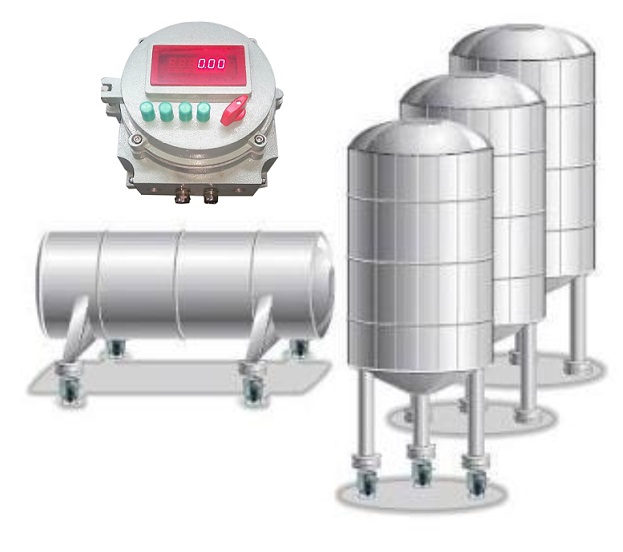Tank weighing Load cells may be used to weigh tanks, hoppers or vessels in various installation configurations. The installation of load cells into a practical field application requires several basic rules as well as careful design attention if the system has to be accurate and provide a long, maintenance free span of operation.
Tank weighing systems – As per customer requirement with set points systems
Site Plant of Tank Weighing
Tank weighing systems are specialized scales designed to accurately measure the weight of tanks, vessels, or containers that hold liquids, gases, or bulk materials. These systems are commonly used in industrial and commercial applications where precise weight measurement of contents is crucial for inventory management, process control, and quality assurance. Here are some key aspects of tank weighing systems:
- Load Cells: Tank weighing systems typically use load cells, which are sensors that measure the force exerted by the contents of the tank. Load cells can be mounted under the legs or supports of the tank to measure the weight.
- Accuracy: Tank weighing systems are designed for high accuracy to ensure precise measurement of the contents. This accuracy is important for inventory control, batch processing, and meeting regulatory requirements.
- Integration with Process Control: Many tank weighing systems are integrated with process control systems or software. This integration allows for real-time monitoring of weight, automation of filling or dosing processes, and data logging for analysis and reporting.
- Tank Level Measurement: In addition to weight measurement, some tank weighing systems can also provide information about the level of contents in the tank. This data is valuable for managing inventory levels and preventing overfilling or underfilling.
- Versatility: Tank weighing systems can be used with various types of tanks, including horizontal tanks, vertical tanks, silos, and hoppers. They are adaptable to different industries such as food and beverage, pharmaceuticals, chemicals, agriculture, and manufacturing.
- Safety Features: Tank weighing systems may include safety features such as overload protection, alarms for abnormal weight fluctuations, and secure mounting to prevent accidents or damage to the equipment.
- Calibration and Maintenance: Regular calibration and maintenance are essential for ensuring the accuracy and reliability of tank weighing systems. This includes checking load cell integrity, zero calibration, and verifying accuracy with known weights.
.png)
